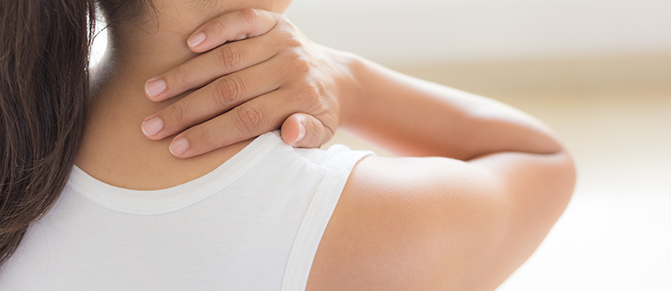
A pain in the neck?
In the course of my role as a Physiotherapist in the Xcel Health Maidstone and Sittingbourne Clinics, I often get asked about neck pain. Specifically, what it is, how it starts and the symptoms that it can cause. My aim is to ensure that your neck pain does not become a ‘pain in the neck!
Neck pain is one of the most common symptoms that I see in the majority of clients I treat. In fact, nearly 70% of people experience neck pain at some point in their life. We seem to always be able to explain it away with such phrases as ‘it’s completely normal, did you see the day I had?’, or ‘I worked hard in the gym yesterday on my back and shoulders day, so it’s to be expected’, ‘I had a long day driving’, or even ‘I’m old, it’s just a normal fact of life.’ Wrong, wrong, wrong and WRONG!!
Usually there is a reason that the pain starts. But what is it? Let’s have a look Neck pain is one of the commonest symptoms in people. It is said that almost 7 out of 10 people would experience a neck pain in some part of their lives. We all say, “oh, I had a long day” or “I trained my shoulders yesterday in the gym” or “I had to drive for a long period of time”. But how does your neck pain actually start? What are the causes and the symptoms of your neck pain?
Let’s look at the causes first:
- Poor posture - The most common and best known cause of all neck pain. There are so many things that we do on a daily basis that are not good for our neck and can cause this. They are really simple things such as holding our heads in an awkward, unnatural position for long periods of time (during work, more of us do this than we realise),watching television whilst sat on the sofa (again, we tend to lean forward or unnaturally tilt our heads to do this), texting on your phone whilst walking (apart from the obvious dangers of reducing your awareness of what is going on around you, the neck gets pushed forward), reading a book (bending over too far) and gardening (the neck is not taking the weight of the head in the way that it was designed to do).
If you have poor posture, it forces all of the bits that make up your neck work a lot harder than they were designed to do and if not corrected, this can lead to overuse injuries and even permanent distortion and disfigurement of the spine. - Sports injury - Sudden neck movements, unusual movements, falls or collisions can trigger neck pain, this is most often caused in contact sports. Warming up your neck muscles before playing sport can mitigate some of the risk. Even running or cycling can cause these injuries and no sport is exempt!
- Repetitive Movements - Continuous moving of the head/neck can lead to overuse of the muscles around the neck leading to muscular spasms/strains.
- Holding the head in the same/ in an unusual position - Due to the muscles not getting used as much, this can lead to them tightening which can., in turn, leads to neck pain.
- Whiplash - An impact which causes your head to move violently in any direction causes a whiplash injury, tearing the soft tissue near the top of the spine, or worse, rupturing it. This is often caused by road traffic accidents.
- Chronic causes of the neck pain - Medical conditions, such as disc herniation, vertebral fracture, Disc degeneration, Cervical Osteoarthritis/Spondylosis (aka Neck Arthritis), Spinal cord injury
And the symptoms you will experience:
- Muscular pain - An aching or sore neck and shoulder muscles due to overexertion or prolonged physical or emotional stress. This can make your neck feel stiff and tight.
- Muscular spasms - These are caused by a muscle injury, but it may also occur as a result of a spinal disc or nerve problem, holding the same posture or even emotional stress which causes a sudden, tightening of the neck muscles. This may limit your neck mobility.
- Headaches - Neck-related headaches or cervicogenic headaches are commonly felt in the back of the head and upper neck and usually occur when you have a muscle spasm or tension.
- Tingling, numbness or weakness in your arm, shoulder or hands/ Radiating pain: - usually as a result of nerve compression/ nerve root irritation/ muscular spasm or a trigger point.
- In severe cases - Difficulty in walking or balancing, Loss of bladder or bowel control, losing of grip strength and Fever or chills.
Prevention is always better than cure, but keep an eye out for my next blog which will deal with the best ways to manage neck pain.
-
Desiree June 08, 2022
-
Vaidehi June 01, 2022
-
Isha May 30, 2022
-
Toby May 30, 2022
-
Anagha May 06, 2022





